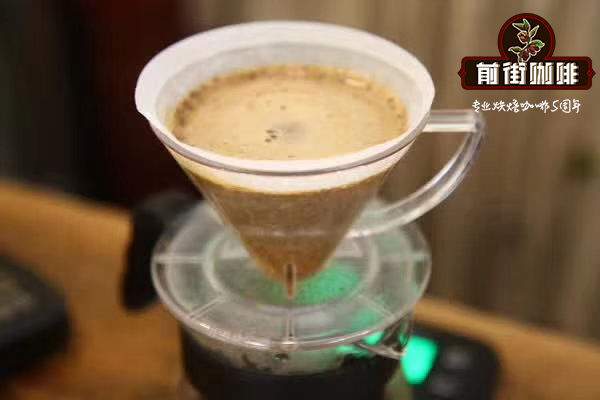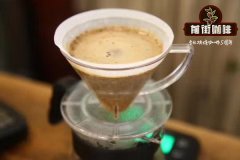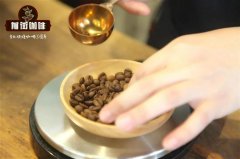The difference between the Gossi Riga Black Soul and the Black Pearl
The black soul of Costa rica
Country: Costa Rica
Product name: the black soul of Laslajas
Production area: central valley
Level: SHB
Handling method: daily
Altitude: 1300 Murray 1500 m
Variety: Caturra & Catuai
Ras La Haas Valley is located in the central valley area under the foot of the de Alajuela volcano. It has been operated by the owner Chac ó n family for more than 80 years. The mountain has an elevation of 1300m and an annual output of about 46000 kilograms. During the annual production season from December to February in Laslajas, farmers only harvest ripe and ripe fruit, and most of them use secret processing and seasoning to improve the sweetness and richness of coffee. At the same time, they are placed in non-continental shelf-type grocery farms to ensure that coffee can receive light evenly and avoid excessive fermentation. At the same time, we have also actively obtained international certification certificates. At present, USDA of the United States, JAS of Japan, and NOP have been certified by international institutions.
Description of flavor: passion fruit, drupe, black raspberry, raspberry
There are eight coffee producing areas in Costa Rica, of which three are recognized as the best, namely, Tarazu, the Central Valley and the Western Valley. Las Lajas is located in the foothills of Sabanilla de Alajuela and Poas Volcano in the central valley. "Lajas" is the name of the Chakon family processing plant, whose estate has Finca La Mirella and Finca San Luis, the estate that produces the bean. Francisca and Oscar Chac ó n, the third-generation operator of Las Lajas's small coffee processing farm, have been in business since their grandparents for more than 80 years. In 1995, Oscar's father died of cancer. They suspected that the chemical fertilizers and pesticides used on the farm were the culprits. Instead of using toxic chemicals, they switched to natural and homemade compost and adopted natural farming methods that were environmentally friendly and ecologically friendly. Shade planting in the native forest. After five years of organic planting until the soil, leaves, and fruit were analyzed, Lajas became the first manor in Costa Rica to be organically certified in 2000.
Lajas is also the first manor in Central America to start honey treatment and natural sun treatment. Tanning is a very traditional practice, which uses the least resources, but because there are too many uncontrollable factors, it is very difficult to do well. Francesca has added many innovations, such as using the sugar meter (Brix meter), which is often equipped in the wine industry, to measure the sugar content of the fruit, and to determine the best time and treatment of harvest according to the sugar content of Brix. Only those with more than 20% sweetness will be exposed to the sun. The Brix value of general fruit is 14 for apple, 12 for lemon and 18 for passion fruit, but the coffee cherry in Lajas can reach 21 Murray 22%. LaHaas not only does the sun, honey treatment, but also has water to wash beans. The beans grown on the farm are Caturra, Catuai and Villa Sarchi, as well as a small number of Kenyan species SL28, Obata and so on.
The natural treatment process of French Sika is quite laborious. Hand-harvested high-sugar cherries are first placed in an African viaduct in the sun for about 10 days, and then placed in a plastic cloth-covered greenhouse to create more direct heat and continue to dry. until the water content reaches 11.5%. The slow drying process allows raw beans to develop more natural sweetness from within, but it also needs more careful care and precise calculation of the number of turns. In the end, the red cherries turn black, giving off the aroma of fruitcake, black sugar and even sherry, and it's done.
There are two kinds of sun treatments in LaHaas.
Black Pearl (Perla Negra): sun-treated, dried in an elevated bed, turned normally
Black Soul (Alma Negra): tanned, dried in an elevated bed, turned only a few times a day.
The Black Soul has less turning times and a higher degree of fermentation than the Black Pearl, but it is also more likely to fail. Under the careful treatment of Lajas, this "Black Soul" has become the best of sun-dried beans with rich flavor, thick and round taste and long finish. With Lajas different treatment of raw beans, showing different flavors, compared with each other, you can definitely have a special experience.

Important Notice :
前街咖啡 FrontStreet Coffee has moved to new addredd:
FrontStreet Coffee Address: 315,Donghua East Road,GuangZhou
Tel:020 38364473
- Prev

What is the difference in flavor and taste between Guji and Sidamo in Ethiopian coffee producing area
There are eight major coffee producing areas in Ethiopia: Lekempti, Limu, Illubabor, Djimmah, Harar, Teppi/Bebeka, Sidamo and Yirgacheffe. Evaluation of Ethiopian Coffee in China
- Next

How to rush the red mark in Ruoxia village to taste good Ailok pressure V60 siphon pot pressure kettle smart cup big fight
Professional coffee knowledge exchange more coffee bean information Please follow the coffee workshop (Wechat official account cafe_style) the editor has recently tried many kinds of Rose Summer in Rose Summer Village, so the editor chose one of them [Rose Summer Village Red Standard Rose Summer] to show its charm under different extraction appliances. This bean mainly showed its citrus fruit flavor and nuts when we tested it in the cup.
Related
- Detailed explanation of Jadeite planting Land in Panamanian Jadeite Manor introduction to the grading system of Jadeite competitive bidding, Red bid, Green bid and Rose Summer
- Story of Coffee planting in Brenka region of Costa Rica Stonehenge Manor anaerobic heavy honey treatment of flavor mouth
- What's on the barrel of Blue Mountain Coffee beans?
- Can American coffee also pull flowers? How to use hot American style to pull out a good-looking pattern?
- Can you make a cold extract with coffee beans? What is the right proportion for cold-extracted coffee formula?
- Indonesian PWN Gold Mandrine Coffee Origin Features Flavor How to Chong? Mandolin coffee is American.
- A brief introduction to the flavor characteristics of Brazilian yellow bourbon coffee beans
- What is the effect of different water quality on the flavor of cold-extracted coffee? What kind of water is best for brewing coffee?
- Why do you think of Rose Summer whenever you mention Panamanian coffee?
- Introduction to the characteristics of authentic blue mountain coffee bean producing areas? What is the CIB Coffee Authority in Jamaica?

